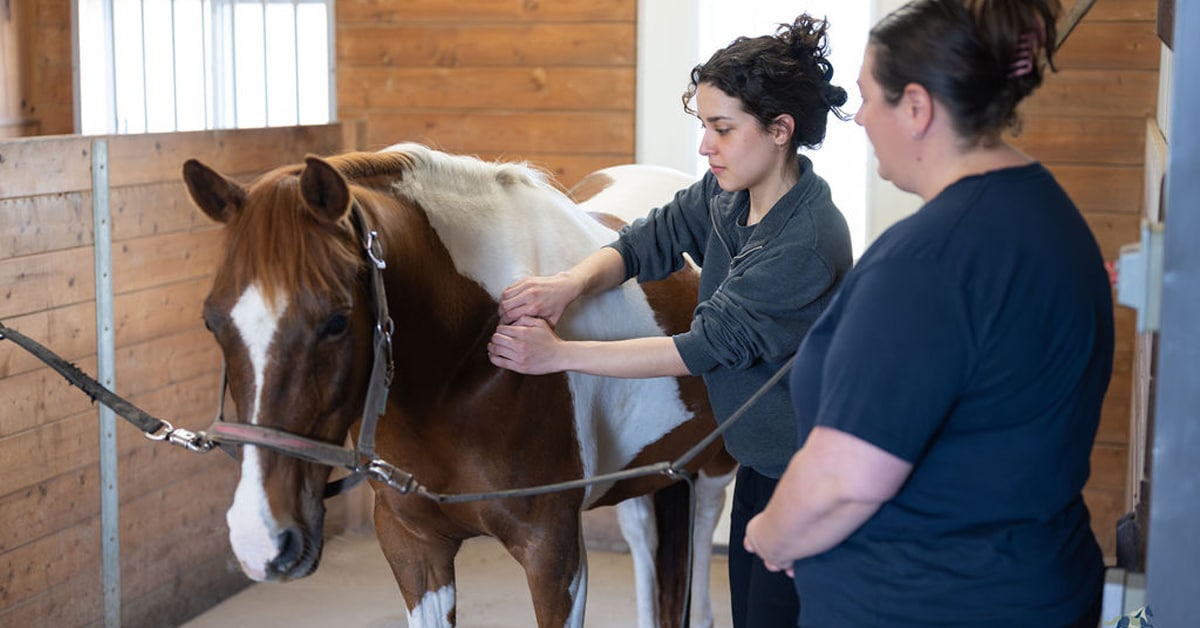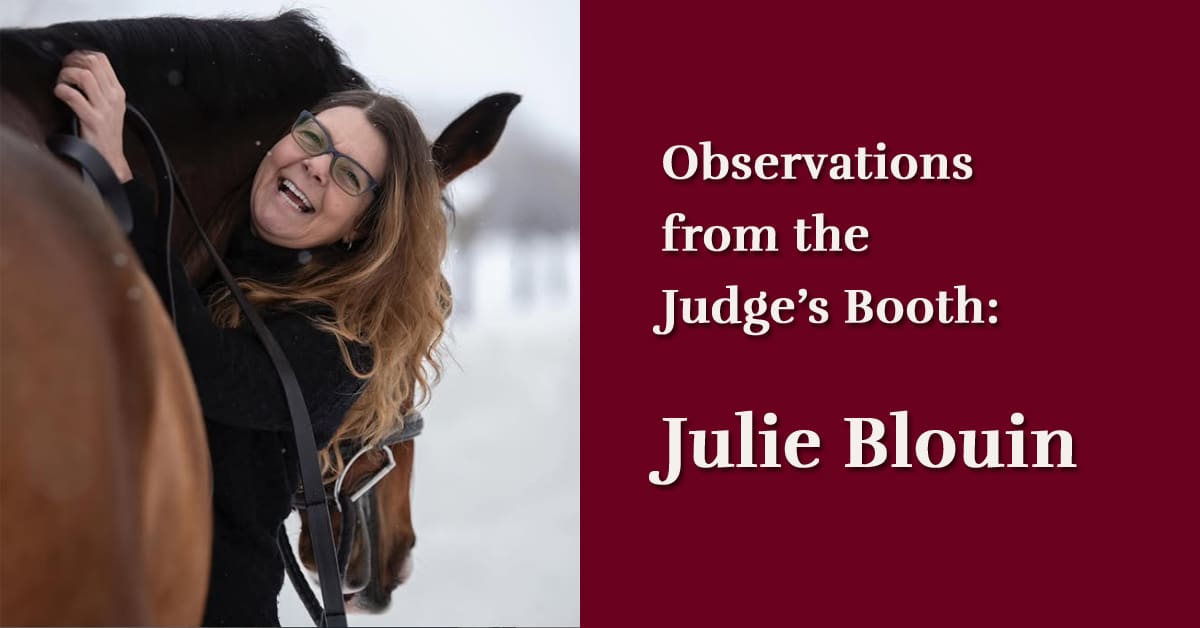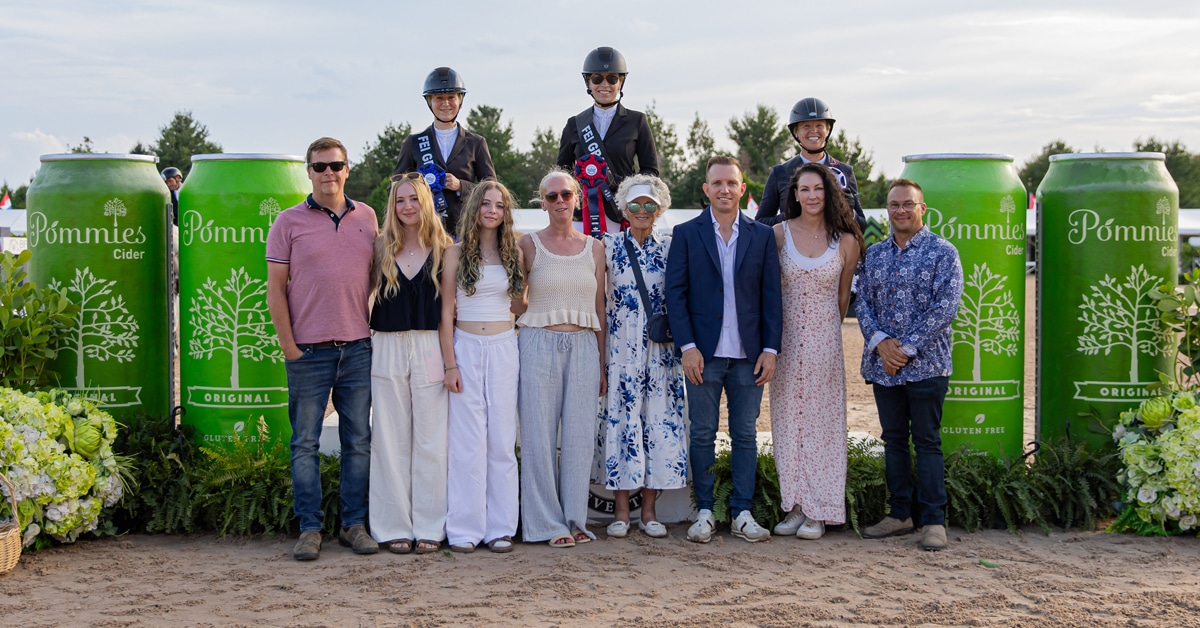At their Reindalyne Farm in Uxbridge, ON, Kendal Lehari (short-listed on the 2014 Canadian Eventing Team) and her eventer/coach mother, Gwen, start many of their own horses, clients’ horses or off-the-track Thoroughbreds they are retraining as eventers. In the second of a series on training young event horses, Kendal discusses their system for working with three-year-olds.
In the first article of this series, we talked about how we start horses in the fall/winter of their two-year-old year. It’s a four- to six-week process, followed by a long break until they turn three.
During that initial training, the horses will have started lungeing in side reins and have learned to move freely into the contact. They’ve also been introduced to long-lining and learned how to stop, go, and steer. By the time we back them, it’s just adding weight and leg to the equation. We usually do only walk-trot with two-year-olds, and only canter if they offer it.
Refresher Course
When we start them again as three-year-olds after their break, we’ll do a refresher, going over the lessons they learned a few months earlier. The first few days it’s lungeing, then long-lining a couple of times and if they seem to remember everything, I’ll get on them by the end of the week.
First, we work in the arena where we’ll do walk, trot, and canter if they are up to it. Then we’ll ride in the dressage ring and around the fields. We hack young horses a lot to get them exposed to as much as possible, wherever there is ‘atmosphere.’ We take them by tarps and fallen logs and want them to learn to go by them regardless from day one.
We work them on our hacks, such as practicing the canter up and down hills. We get them used to walking and trotting in the fields and will take them over little logs to give them a start for their four-year-old year. We usually hack with an experienced horse, as it has a calming effect on the young ones and provides a lead to follow. We free-jump them once a week; it makes a huge difference in starting them over fences, because they learn to look for the jump from the start. They also learn how to jump and learn from their mistakes without having to balance a rider.
Zero Tolerance Policy
Everything we do with them is training, whether it’s bringing them in from the paddock, feeding them or tacking them up. It’s a firm-but-kind no-tolerance policy for naughty behaviour. If they are asked to walk, they must walk. If asked to halt, they have to halt. We want them to learn our body language so if we stop, they have to stop at the same time without using the lead shank. If they are rude on the ground, they will be rude when you are riding them. They must always do what they are asked on the ground. The ones that have had little handling or have been allowed to get away with a lot are always the hardest to work with and take a lot longer to train to learn their boundaries.
We work our horses five days a week, but we don’t ride for long when they are three or four. Their bodies are growing and their energy is going into muscling up, and they can’t handle a lot of work mentally. If I get on them and they do what they’re asked, I’m only in the saddle for 15 to 20 minutes. If they are rude or having trouble understanding, I might work them for 30 minutes.
We vary their routine. We might do a flatwork day, some pole work and work over fences other days. My goal is to keep them as happy as possible with the work, and to learn to trust me. When they are happy and trust you, you can push them harder later on.
Early pole work
For pole work for a three-year-old, we might put down a single pole or a line of poles (approximately 9 feet apart, depending on stride), then walk and trot through. The first time, they might try to jump the poles. We want them to learn to stay at the same speed and do it until they are going through quietly and it’s not a big deal.
If their canter is strong, I might canter the line, but if it’s weak I’ll throw a single pole on a circle while they are still learning to get their balance, then add lines of poles, or poles on a circle, after they are able to hold their canter.
First jumps
When we introduce them to jumping with a rider, we will do a lot of trotting to the jumps. Their steering is usually not very good, as they are growing and off-balance. We will put in a line of poles to a little crossrail. We start with canter poles (usually five of them) set 9 feet apart, but will adjust the distance according to the horse’s stride length. As the horse gets older and stronger, we will shorten the distance between.
Once they are confident with poles, we turn the last into a crossrail. When they are good with that, we will add another jump, leaving the poles in between to help regulate their stride. We leave the jumps low, but will add in filler such as flower boxes or little walls as soon as they are happy jumping a little vertical so they get used to it right away. We might also make the vertical into a small oxer.
Attitude adjustment
By the end of fall of their three-year-old year, if we have room on the trailer we try to take them to a horse show to school them without competing, or take them off-property to school cross-country over little obstacles.
For a three-year-old that’s been really good or is growing quickly, we might give him two weeks off, then start him again. Mental breaks are important and they usually come back even better.
If they are getting cranky, we have to assess whether something in the work changed to confuse them, whether they are physically sore or are changing body shape, or whether it’s behavioural and has to be addressed. For example, my mother’s horse is young, and because this winter was harsh he was doing a lot of arena work and getting balled up, sucking back and wanting to buck. As soon as she was able to get him outside and gallop him, his whole attitude changed and he was happy and forward.
We always change up the routine with young horses to keep them thinking. They are happier if the routine isn’t always the same. A horse tells you when it’s ready for more.
Watch for the final installment of the ‘Developing the Young Event Horse’ series, where the Leharis work with four/five-year-olds.
The Latest









